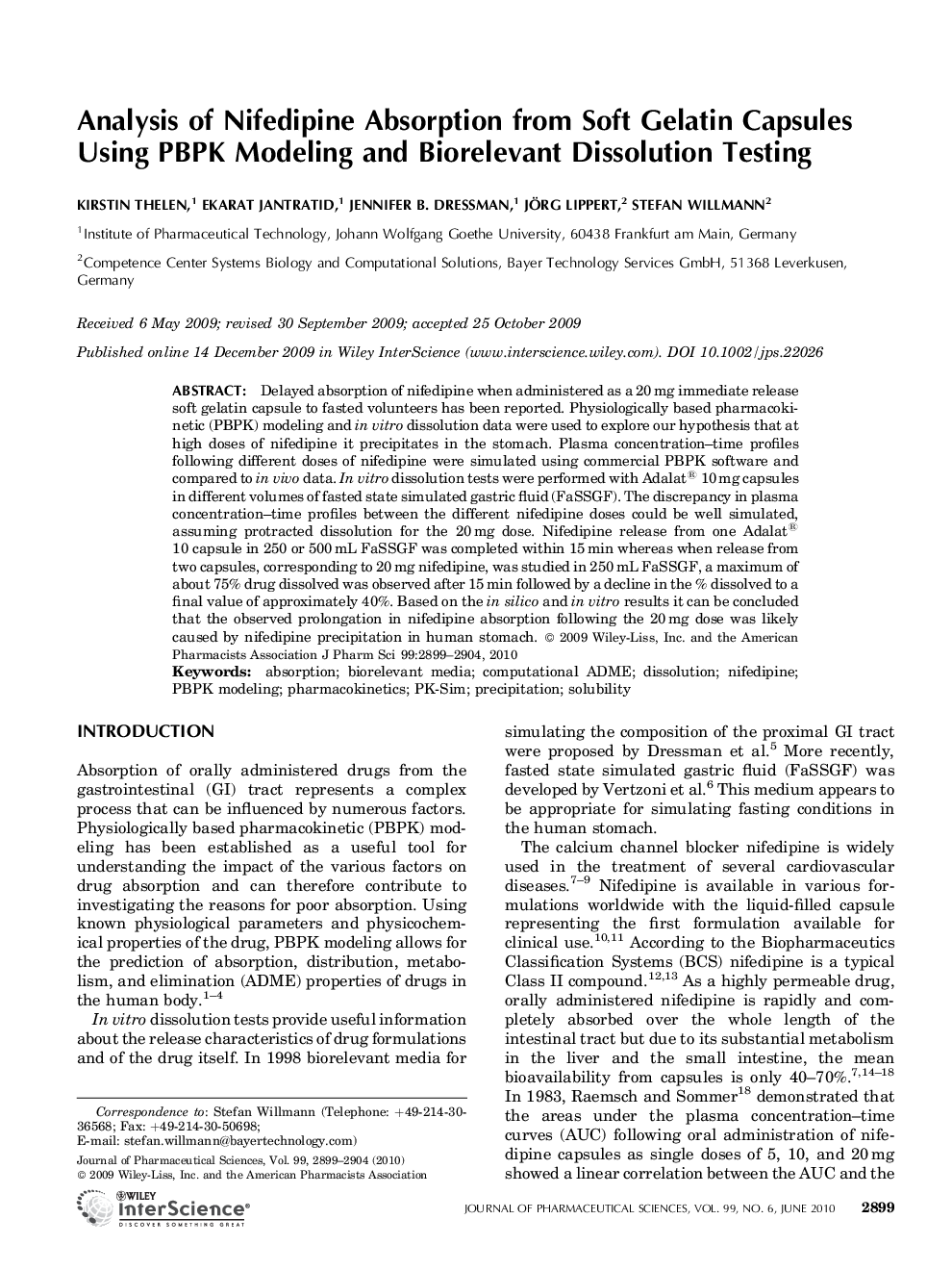| Article ID | Journal | Published Year | Pages | File Type |
|---|---|---|---|---|
| 2485720 | Journal of Pharmaceutical Sciences | 2010 | 6 Pages |
Abstract
Delayed absorption of nifedipine when administered as a 20Â mg immediate release soft gelatin capsule to fasted volunteers has been reported. Physiologically based pharmacokinetic (PBPK) modeling and in vitro dissolution data were used to explore our hypothesis that at high doses of nifedipine it precipitates in the stomach. Plasma concentration-time profiles following different doses of nifedipine were simulated using commercial PBPK software and compared to in vivo data. In vitro dissolution tests were performed with Adalat® 10Â mg capsules in different volumes of fasted state simulated gastric fluid (FaSSGF). The discrepancy in plasma concentration-time profiles between the different nifedipine doses could be well simulated, assuming protracted dissolution for the 20Â mg dose. Nifedipine release from one Adalat® 10 capsule in 250 or 500Â mL FaSSGF was completed within 15Â min whereas when release from two capsules, corresponding to 20Â mg nifedipine, was studied in 250Â mL FaSSGF, a maximum of about 75% drug dissolved was observed after 15Â min followed by a decline in the % dissolved to a final value of approximately 40%. Based on the in silico and in vitro results it can be concluded that the observed prolongation in nifedipine absorption following the 20Â mg dose was likely caused by nifedipine precipitation in human stomach.
Keywords
Related Topics
Health Sciences
Pharmacology, Toxicology and Pharmaceutical Science
Drug Discovery
Authors
Kirstin Thelen, Ekarat Jantratid, Jennifer B. Dressman, Jorg Lippert, Stefan Willmann,
